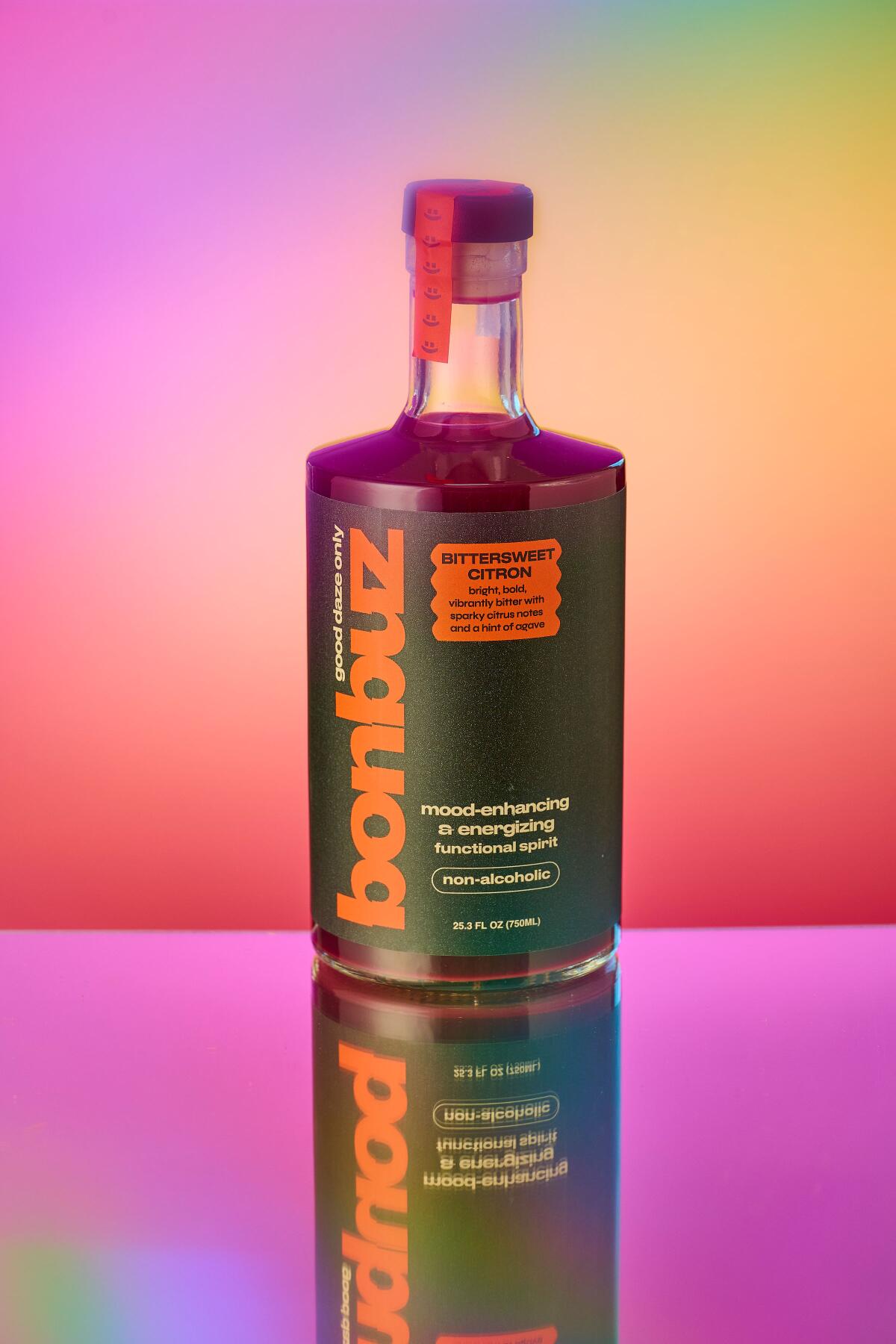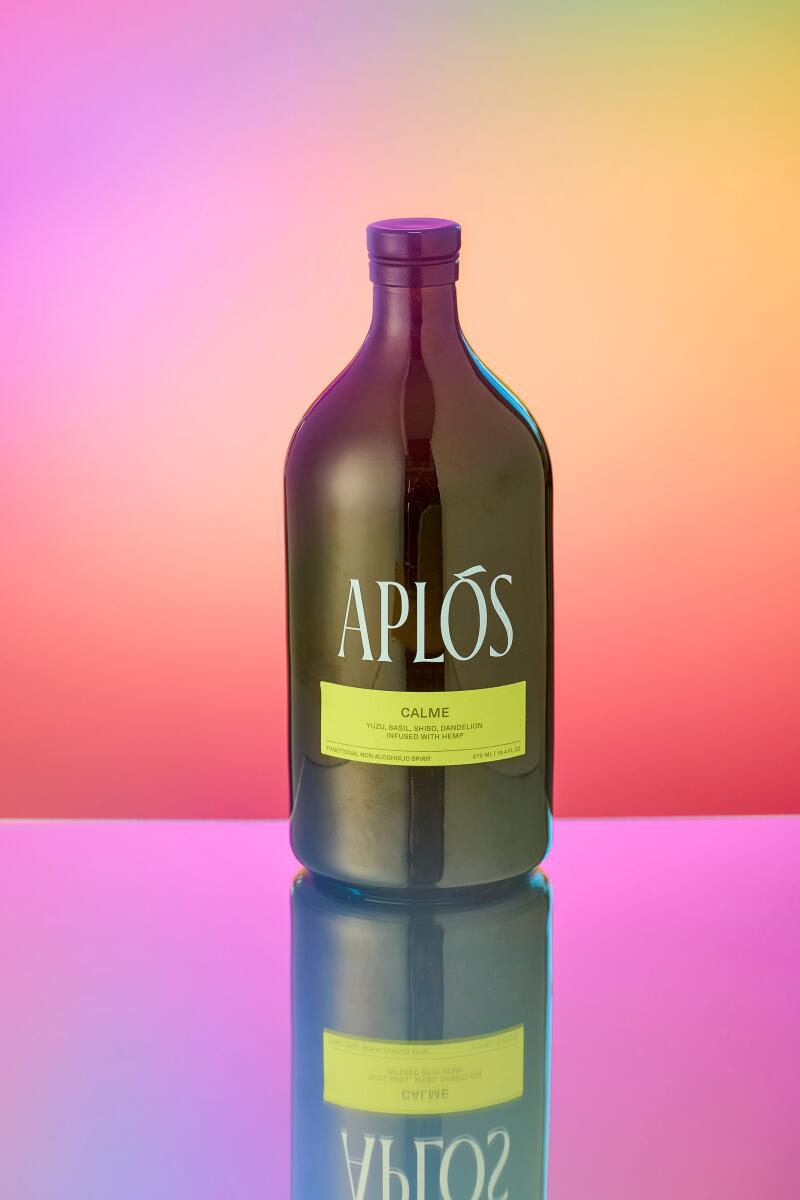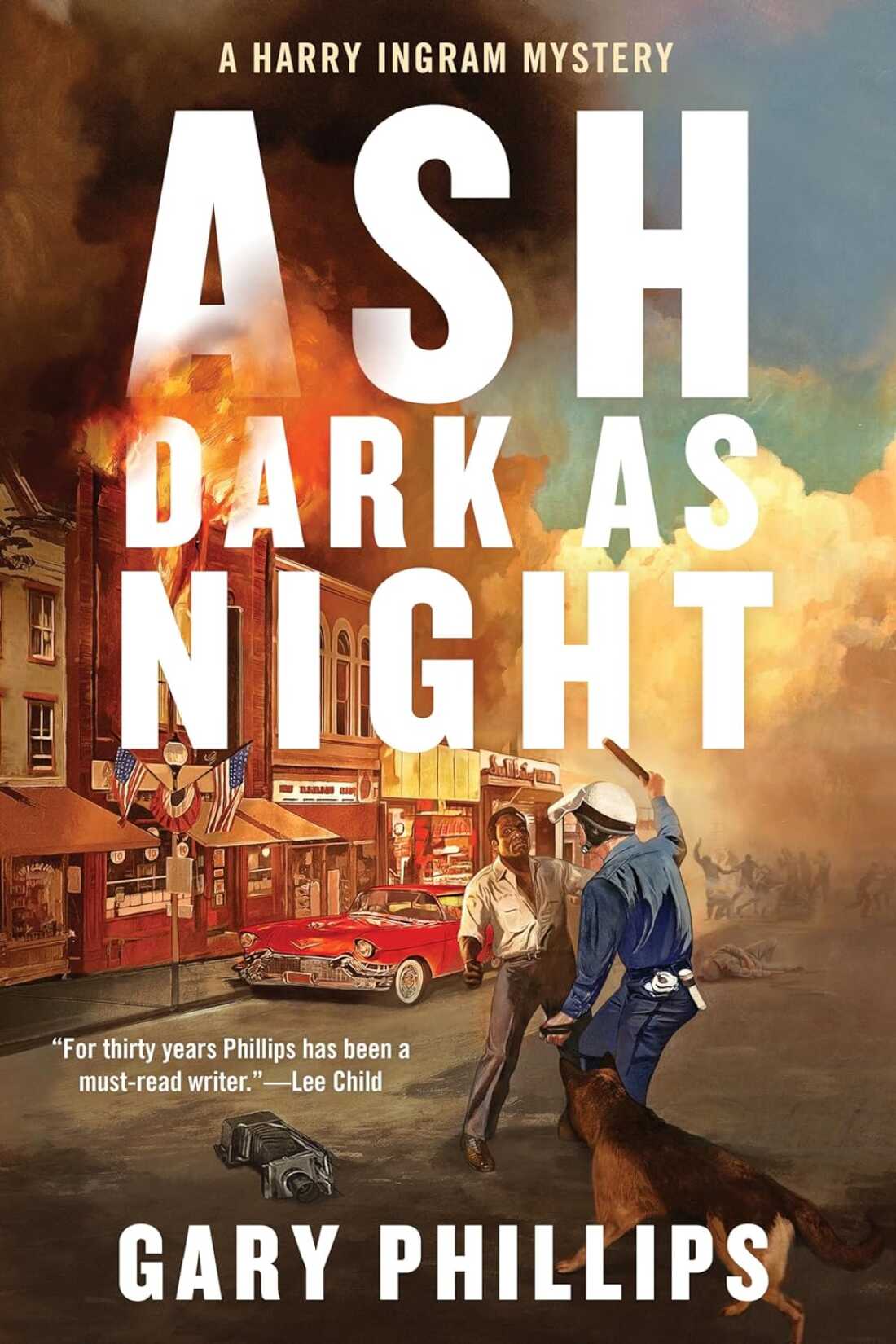Lifestyle
The debate over “LatinX” and how words get adopted — or not

Word Wars: Wokeism and the Battle Over Language – John McWhorter
YouTube
Part 2 of the TED Radio Hour episode The History Behind Three Words
New terms — like LatinX — are often pushed by activists to promote a more equitable world. But linguist John McWhorter says trying to enforce new words to speed up social change tends to backfire.
About John McWhorter
John McWhorter is an associate professor in the Slavic Department at Columbia University. He is the host of the podcast Lexicon Valley and New York Times columnist.
McWhorter has written more than twenty books including The Power of Babel: A Natural History of Language, Words on the Move: Why English Won’t – and Can’t – Sit Still (Like, Literally) and Nine Nasty Words. He earned his B.A. from Rutgers, his M.A. from New York University, and his Ph.D. in linguistics from Stanford.
This segment of the TED Radio Hour was produced by James Delahoussaye and edited by Sanaz Meshkinpour. You can follow us on Facebook @TEDRadioHour and email us at TEDRadioHour@npr.org.
Web Resources
Related TED Bio: John McWhorter
Related TED Talk: 4 reasons to learn a new language
Related TED Talk: Txtng is killing language. JK!!!
Related NPR Links
Latinx Is A Term Many Still Can’t Embrace
Why the trope of the ‘outside agitator’ persists
Next U.S. census will have new boxes for ‘Middle Eastern or North African,’ ‘Latino’

Lifestyle
Can't stop the (classical) music : It's Been a Minute

Johann Sebastian Bach and Nina Simone
Hulton Archive/Getty Images,
hide caption
toggle caption
Hulton Archive/Getty Images,

Johann Sebastian Bach and Nina Simone
Hulton Archive/Getty Images,
It’s Black Music month! This week, Host Brittany Luse invites Howard University professor and trombonist Myles Blakemore to talk about how classical music influenced some of our favorite musicians. They look at how the counterpoint technique of Johann Sebastian Bach may have inspired Nina Simone, and how a love of Genuine can turn into a career in classical music.
Want to be featured on IBAM? Record a voice memo responding to Brittany’s question at the end of the episode and send it to ibam@npr.org.
This episode was produced by Corey Antonio Rose. It was edited by Jessica Placzek and Sara Sarasohn. Engineering support came from Patrick Murray. We had factchecking help from Ayda Pourrasad. Our executive producer is Veralyn Williams. Our VP of programming is Yolanda Sangweni.
Lifestyle
Can this trendy ingredient in Erewhon's drink aisle really boost your mood or help your anxiety?

Licorice root, reishi mushrooms and vitamin B-6 are often among the ingredients listed in various adaptogenic drinks.
(Rebecca Peloquin / For The Times)
It’s not enough for a drink just to taste good anymore. Most specialty grocery or liquor stores now offer colorful cans and bottles that advertise so-called adaptogens, ingredients that beverage companies claim can help you manage stress, enhance creativity and sharpen focus. With packaging printed with bright colors and trendy fonts, these drinks are designed to pop on the shelves and on your social media feed — a subtle health flex for the aesthetically conscious and sober-inclined.
You can find them in trendy superettes around the city. Silver Lake’s Soft Spirits’ adaptogenic section includes a Spritz Italiano from L.A.-based De Soi (founded by Katy Perry and Morgan McLachlan), a concoction containing Reishi mushroom, which the company claims is “a stress soothing, brain boosting botanical often referred to as ‘the herb of immortality.’” At Bristol Farms across the city, you can pick up Bonbuz, a blood red tonic that promises to “heighten your senses and transport you to a deeper mind-body experience” with ingredients like pyridoxine-HCL (a vitamin-b6), ginger root and rhodiola rosea. Or you can grab a hemp-infused chili margarita by Aplos at the Dream Hotel in Hollywood that says it can “elevate mood, stimulate brain function and boost energy.” In Erewhon, you can’t throw a gluten-free turmeric chicken tender without hitting a canned beverage touting its adaptogenic qualities.

Bonbuz Bittersweet Citron, a non-alcoholic spirit with citrus, ginger and gentian.
(Rebecca Peloquin / For The Times)
But the appeal for consumers goes beyond smart marketing and playful design. The adaptogenic drink market is booming, as research shows that young people are less and less interested in alcohol and seek healthy alternatives. (Gen-Z drink 20% less than millennials, which is perhaps why Anheuser-Busch InBev projects one-fifth of their sales to be from non- and low-alcohol beers by 2025). The global market for these beverages is set to reach $1.2282 billion by 2024, with the projected valuation increasing to $2.4168 billion in 10 years.
A TikTok video from last fall that highlights different types of adaptogenic drinks has been viewed over 1.2 million times. In the comments, viewers ask where they can buy them and share their experiences.
“I love these drinks,” one user writes. “I have horrible anxiety and some of them calm me and make me feel warm and fuzzy lol.”
Though adaptogenic drinks are relatively new to Western consumers, the term “adaptogen” has been around since 1947, when it was coined by the Soviet scientist Nikolai Lazarev who was searching for stimulating substances during the Cold War.
“Adaptogens are made from herbs, roots, and other plant materials that may help our bodies deal with and manage stress or restore homeostasis after stressful situations,” said Dana Ellis Hunnes, a senior clinical dietitian at UCLA Medical Center and assistant professor at UCLA Fielding School of Public Health, in an email. “Some of these stressors can be physical (a small burn), physiological (burnout from work and the toll that takes on our bodies) or psychological (emotional stress).”
Examples of common adaptogens are ingredients like rhodiola (a root promoted to increase stamina), ashwagandha (a shrub promoted to reduce stress and fatigue), licorice and reishi mushrooms, which have been used as traditional Chinese and Ayurvedic medicines for centuries.
Today, those same ingredients are showing up in adaptogenic supplements and beverages, but their medical value is debated. In the Food and Drug Administration’s book, adaptogens are categorized as supplements and thus not regulated the same way drugs are. For that reason, it’s hard for medical experts to make blanket statements about their efficiency or even their safety.

Licorice root, reishi mushrooms and vitamin B-6 are often among the ingredients listed in various adaptogenic drinks.
(Rebecca Peloquin / For The Times)
“It’s unknown whether the dose that most people can buy of adaptogens on the market are high enough to produce a medicinal effect,” Ellis said. ”So, what you think you’re buying, may not actually contain as much [or may sometimes contain more] than you think.”
Depending on the person, some adaptogens may even cause nausea and stomach problems. (Those who are taking specific medications, pregnant or breastfeeding should first seek guidance from their healthcare provider before consuming them.) Clarity about adaptogens’ efficacy is further muddled due to the fact that most research on these ingredients comes from animal or in-vitro studies that Nicholas B. Tiller, a senior researcher at the Institute of Respiratory Medicine & Exercise Physiology, noted in an email “are not necessarily applicable to the real world.”
“The few human studies [on adaptogens] are largely disappointing,” he said. “It’s going to require a lot more high-quality evidence before these herbs and other natural products are extensively incorporated into medical practice.”
But do most adaptogenic drink consumers see their consumption of these beverages as explicitly medicinal, or are they simply weighing their options and picking something less altering than a beer and more novel than a seltzer?
“When we initially opened our doors [in 2021], a lot of customers asked ‘what’s the point?’ and had a difficult time wrapping their heads around why anyone would want a cocktail without alcohol,” said Jillian Barkley, Soft Spirits Founder & CEO, in an email. She found these beverages — although harder to acquire back then — hugely helpful when she stopped drinking five years ago.


Aplos Arise, a non-alcoholic spirit infused with adaptogens. De Soi, a non-alcoholic aperitif made with natural adaptogens. De Soi is a company co-founded by Katy Perry and Morgan McLachlan. (Rebecca Peloquin/For The Times)
“Shopping at Erewhon and buying Kin makes you a part of a certain in-crowd, and people are seeking belonging.”
— Nikita Walia, brand strategist
“For those folks, the possibility of a physical effect tends to be enticing,” she said. “‘So you’re telling me I can drink this nightcap and it will help me feel relaxed, but I won’t be intoxicated?’ Yep!”
Nikita Walia, brand strategist and founder and CEO of BLANK, thinks the popularity of adaptogenic beverages will only gain more steam with consumers as our culture puts a higher premium on health and wellness.
“Having a beverage that is a social tonic, well-branded and aesthetically pleasing as a stand-in for alcohol is a perfect substitute,” Walia said in an email. She adds that many of these drinks are expensive and seen as luxury items only adds to their appeal.
“Shopping at Erewhon and buying Kin makes you a part of a certain in-crowd, and people are seeking belonging.”
In other words, whether adaptogenic drinks can actually elevate your mood might not matter — as long as they can elevate your social status.
Lifestyle
4 crime and suspense novels make for hot summer reading

Maureen Corrigan picks four crime and suspense novels for the summer.
NPR
hide caption
toggle caption
NPR
There’s something about the shadowy moral recesses of crime and suspense fiction that makes those genres especially appealing as temperatures soar.


Ash Dark As Night
Penguin Random House
hide caption
toggle caption
Penguin Random House
Ash Dark as Night, by Gary Phillips
I’m beginning my recommendations with two distinctive novels that appeared this spring. Gary Phillips introduced the character of LA crime photographer and occasional private eye Harry Ingram in the 2022 novel, One-Shot Harry. The second novel of this evocative historical series is called Ash Dark as Night and it opens in August 1965 during the Watts riots. Harry, who’s one of two African American freelancers covering the riots, has looped his trademark Speed Graphic camera around his neck and headed into the streets.
We’re told that Harry’s situation is, of course, riskier than that of his white counterparts: “[M]aybe one of these fellas might well get a brick upside their head from a participant, but were less likely to be jacked-up by the law. Ingram realized either side might turn on him.” Indeed, when Harry captures the death of an unarmed Black activist at the hands of the LAPD, the photo makes him famous, as well as a target.
This novel is steeped in period details like snap-brim hats and ragtop Chevy Bel Air convertibles, along with walk-ons by real life figures like pioneering African American TV journalist Louis E. Lomax. But it’s Harry’s clear-eyed take on the fallen world around him that makes this series so powerful.

Blessed Water
Zando
hide caption
toggle caption
Zando
Blessed Water, by Margot Douaihy
You might think a mystery about an inked-up lesbian Punk musician-turned-nun is a little far-fetched; but New Orleans, the setting of the Sister Holiday series, is the city of far-fetched phenomenon, both sacred and profane. Margot Douaihy’s second book in this queer cozy series is called Blessed Water and it finds the 34-year-old Sister Holiday up to her neck in murky flood waters and priests with secrets. Douaihy’s writing style — pure hard-boiled Patti Smith — contains all the contradictions that torment Sister Holiday in her bumpy journey of faith. Here she is in the Prologue recalling how she survived swallowing a glass rosary bead:
After my prayers for clarity, for forgiveness, for a cigarette, … deep inside the wet cave of my body was an unmistakable tickle. …
The bead fought my stomach acid for hours, leaching its blessing or poison or unmet wish. Anything hidden always finds a way to escape, no matter its careful sealing.
Amen to that, Sister Holiday.

The Expat
Pegasus Crime
hide caption
toggle caption
Pegasus Crime
The Expat, by Hansen Shi
The main character in Hansen Shi’s excellent debut spy novel is an alienated young man named Michael Wang. He’s a first generation Chinese American a few years out of Princeton who’s hit the bamboo ceiling at General Motors in San Francisco, where he’s been working on technology for self-driving cars. Enter a femme fatale named Vivian who flatters Michael into believing that his brilliance will be recognized by her enigmatic boss in China. Once Michael settles into life in Beijing, however, he realizes he’s been tapped, not as a prodigy, but a patsy. The Expat wraps up too abruptly, but it’s also true that I wanted this moody espionage tale to go on longer.

The God of the Woods
Riverhead Books
hide caption
toggle caption
Riverhead Books
The God of the Woods, by Liz Moore
Liz Moore’s extraordinary new literary suspense novel reminds me of Donna Tartt’s 1992 debut, The Secret History. There are superficial similarities: Both are thick intricate novels featuring young people isolated in enclosed worlds — in Tartt’s story, a Vermont college campus; in Moore’s, a summer camp in New York’s Adirondack mountains. But, the vital connection for me was a reading experience where I was so thoroughly submerged in a rich fictional world, that for hours I barely came up for air.
There’s a touch of Gothic excess about The God of the Woods, beginning with the premise that not one, but two children from the wealthy Van Laar family disappear from Camp Emerson in the Adirondacks 14 years apart. Moore’s story jumps around in time, chiefly from the 1950s into the ’70s and features a host of characters from different social classes — campers, counselors, townspeople and local police — and the Van Laars themselves.

The precision of Moore’s writing never flags. Consider this reflection by Tracy, a 12-year-old camper who recalls that: “Her father once told her casually that she was built like a plum on toothpicks, and the phrase was at once so cruel and so poetic that it clicked into place around her like a harness.”
Moore’s previous book, Long Bright River, was a superb social novel about the opioid crisis in Philadelphia; The God of the Woods is something weirder and stranger and unforgettable.
Happy summer reading wherever your tastes take you.
-

 News1 week ago
News1 week agoIt's easy to believe young voters could back Trump at young conservative conference
-

 World1 week ago
World1 week agoSwiss summit demands 'territorial integrity' of Ukraine
-

 World1 week ago
World1 week agoProtesters in Brussels march against right-wing ideology
-

 News1 week ago
News1 week agoA fast-moving wildfire spreads north of Los Angeles, forcing evacuations
-

 World1 week ago
World1 week agoAl-Qaeda affiliate claims responsibility for June attack in Burkina Faso
-

 Movie Reviews1 week ago
Movie Reviews1 week agoShort Film Review: Willow and Wu (2024) by Kathy Meng
-

 News1 week ago
News1 week agoMass shooting at Rochester Hills splash pad: Everything we know
-

 Movie Reviews1 week ago
Movie Reviews1 week agoMovie Review: Top 5 Movies to Watch This Father's Day June 16, 2024 –
















